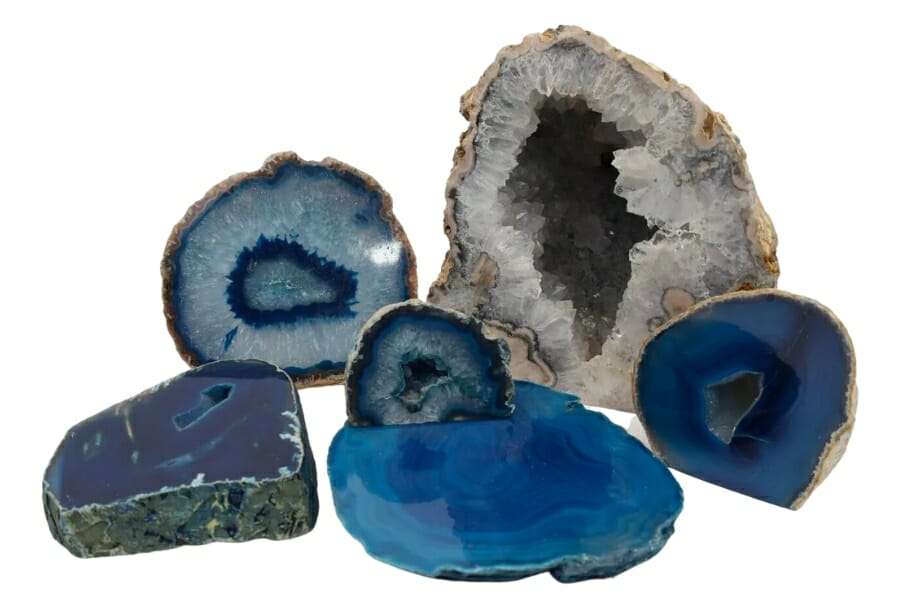Are you a fan of sparkling, mysterious natural wonders that are as beautiful as they’re unique? Then you’ll be fascinated to know about Geodes!
Fascinating people for centuries, a Geode is a type of rock that’s hollow on the inside, filled with a sparkling array of minerals that create intricate patterns and designs. From the outside, a Geode may look like an unassuming gray or brown rock, but once you crack it open, you’ll discover a world of beauty inside.
But Geode isn’t just pretty— it’s also valuable! Collectors and enthusiasts all over the world treasure it for its rarity. If you’re also looking for a truly unique piece to add to your collection, read on because we’ll show you just how much Geode is truly worth.
What Geodes Are
Geodes are like nature’s little surprise packages: you never know what’s inside until you crack them open! They are rock cavities or bubbles that have been filled with minerals over time, creating a stunning display of colors and patterns inside. They can come in all sorts of shapes and sizes, from tiny little pebbles to massive boulders.
We’ve also put together a complete guide on how to identify geodes if you happen to run across one and aren’t sure what it is. We show you how anyone can identify a geode whether it is open or unopened.
One of the coolest things about Geodes is that they’re all completely unique. No two Geodes are exactly alike, so you never know what you’re going to get until you crack one open. It’s like a geological version of a box of chocolates, except instead of biting into a cherry cordial, you might discover a glittering cluster of amethyst crystals or a vibrant layer of banded agate.
There are two types of geodes based on formation, namely:
Volcanic Geode
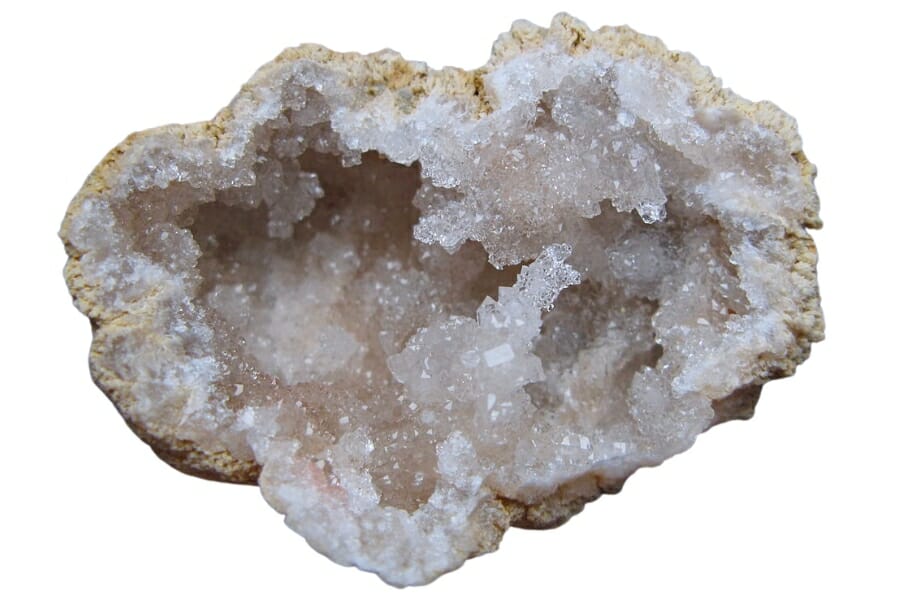
Volcanic Geode are formed in or around volcanic rocks. When lava flows and volcanic ash settle and cool, gas bubbles can become trapped inside the rock. Over time, minerals and other materials fill in the spaces left by these bubbles, creating a hollow cavity within the rock. This cavity is what we call a Volcanic Geode!
We’re such big fans of geodes that we’ve put together a number of guides on where you can find geodes near you. We have local guides for just about every state and many other places.
As with other types, Volcanic Geodes can be made of a variety of minerals and materials, depending on the location where they were formed. Its outside can be smooth or rough, and its interior can be filled with crystals, layers of minerals, or even small fossils.
Sedimentary Geode
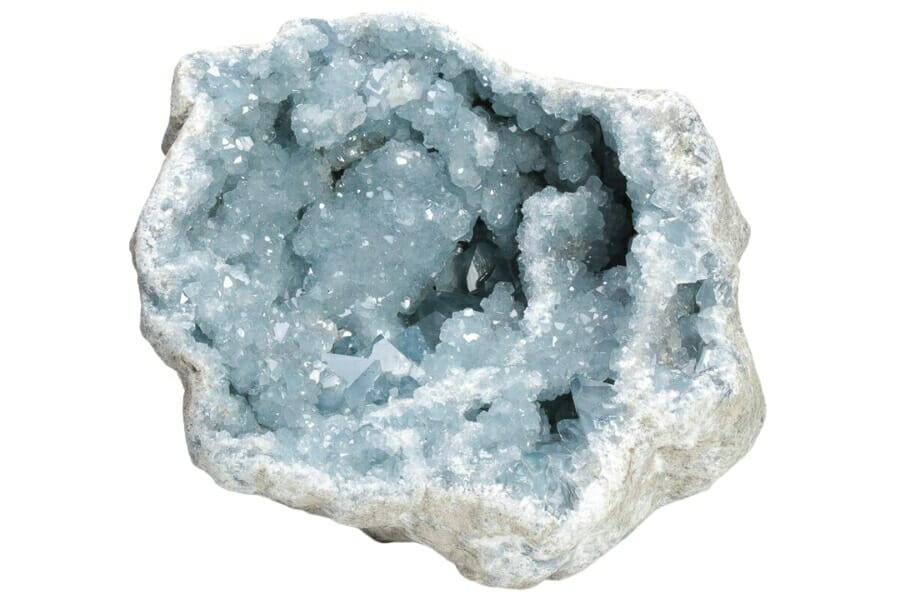
Sedimentary Geodes are formed in sedimentary rocks, which are rocks that have been formed through the accumulation of sediment and organic matter over time. They’re typically formed in water, and they often contain fossils, shells, and other organic materials.
Sedimentary Geodes form in a similar way to Volcanic Geodes, but with some important differences. Rather than being created by gas bubbles trapped in volcanic rocks, these are formed by water seeping through the sedimentary rock and dissolving minerals along the way. Over time, the dissolved minerals can collect in hollow spaces within the rock, creating the Geode cavity.
Now, let’s go into the different kinds of Geodes depending on the crystals they contain and how much they’re worth based on it.
Amethyst Geode
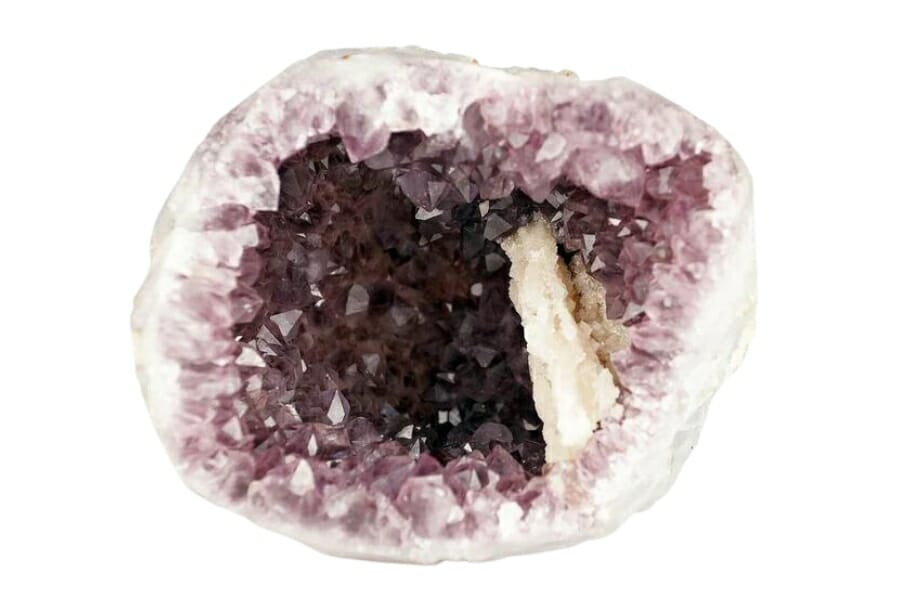
On the outside, an Amethyst Geode may look like an unassuming gray or brown rock. But once you crack it open, you’ll be greeted by a world of beauty. Inside, the Geode is lined with hundreds or even thousands of small, sparkling amethyst crystals, which can range in color from light lavender to deep violet.
Amethyst Geodes can come in all sorts of shapes and sizes. And because each Geode is completely unique, no two Amethyst Geodes are exactly alike. You can often find geodes in the other common places to find amethyst.
How much is Amethyst Geode worth
An Amethyst Geode sells at around $57 to $90 per kilo. Per carat, that’s around $0.011 to $0.02.
Quartz (Druzy) Geode
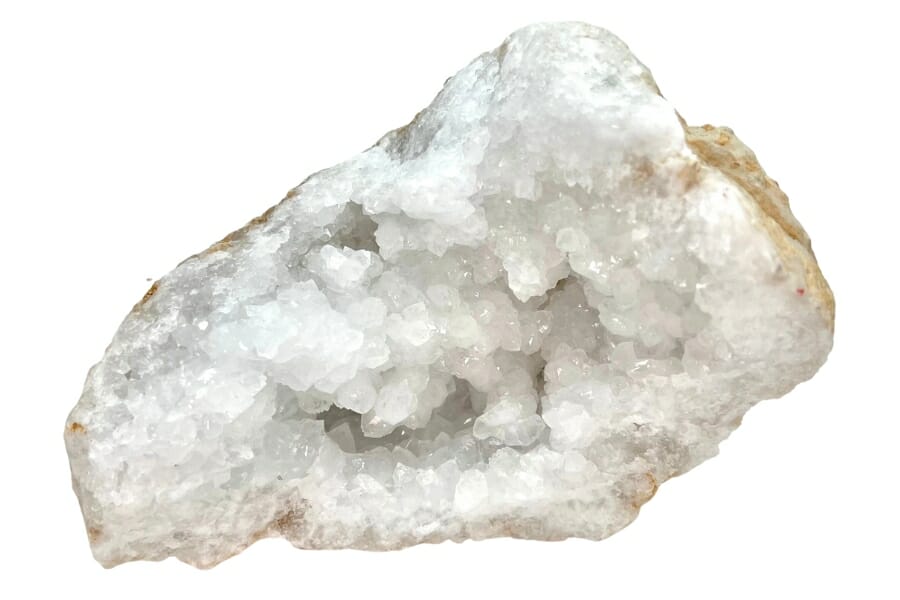
Quartz Geode, as the name suggests, is filled with a stunning array of quartz crystals that can range in color from clear or white to smoky, rose, or even purple. They can come in many different shapes and sizes, from small and round to massive and irregularly shaped. They’re often used as decorative pieces, and some collectors even cut and polish them to create unique and stunning jewelry pieces.
More often that not, Quartz Geodes are Volcanic geodes, as they are typically found in volcanic rock formations.
How much is Quartz (Druzy) Geode worth
Quartz Geode’s price in the current market is at $0.7 to $1.5 per carat.
Agate Geode
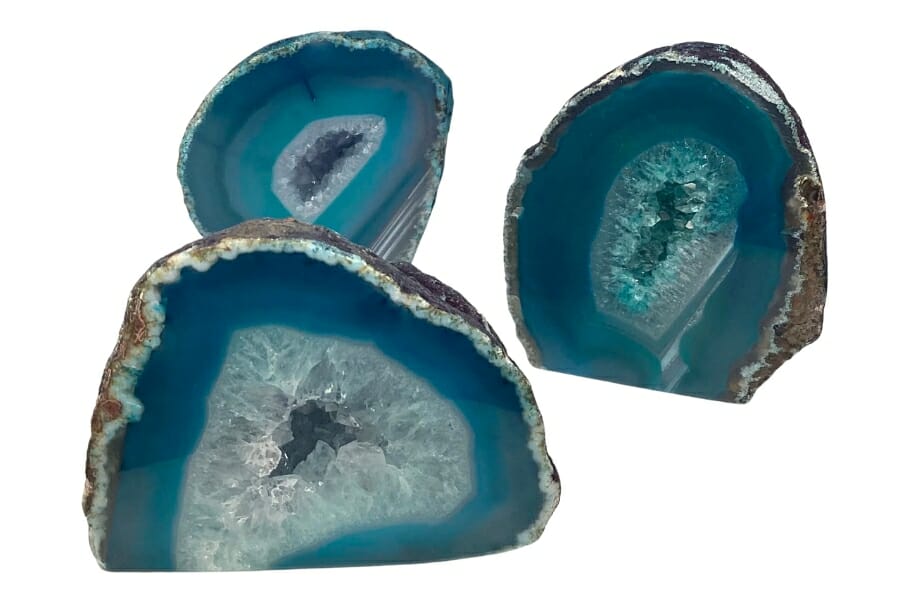
Agate Geode is prized for its beautiful and unique patterns of agate, a form of chalcedony. These Geodes can come in a wide variety of shapes, sizes, and colors, and they’re highly sought after by collectors and enthusiasts all over the world.
When you crack an Agate Geode open, you’ll be greeted by a world of color and pattern. Inside, it’s lined with layers of agate in various hues and patterns, ranging from earthy browns and greens to vivid blues, purples, and pinks. And much like other types of Geodes, the Agate type are typically formed in volcanic rocks, too.
How much is Agate Geode worth
Because of its interesting and mesmerizing patterns, an Agate Geode’s worth is at $0.2 to $0.4 per carat.
Celestite Geode
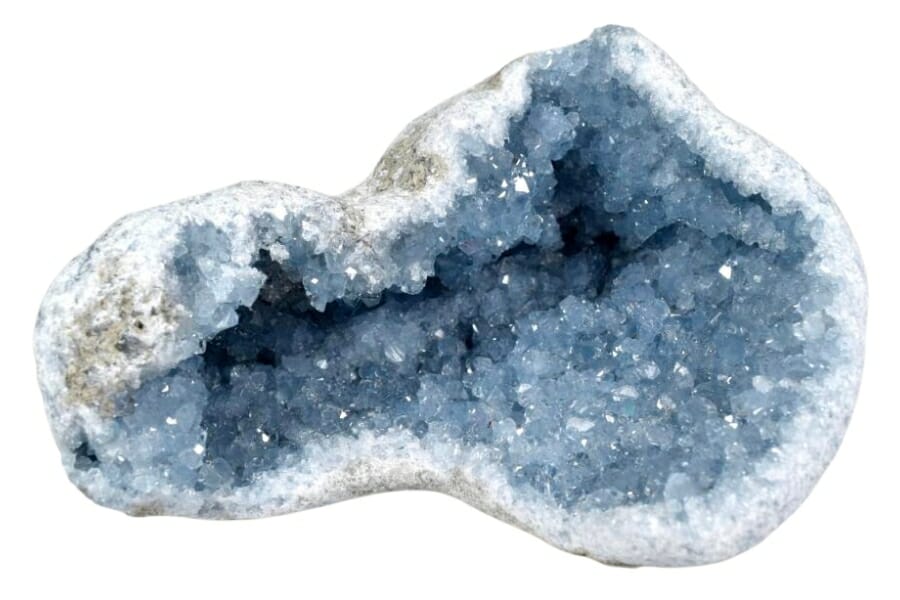
Prized for its striking blue and sometimes colorless crystals of the mineral Celestite, this type of geode is typically found in sedimentary rock formations. The color of Celestite crystals inside can vary depending on the location from where it was formed, and some Celestite Geodes may also contain other minerals such as calcite, too.
Celestite Geodes are often used for decorative purposes, and their unique and striking beauty makes them a popular choice for display. They’re also known for their healing properties, with many people believing that Celestite crystals can promote feelings of calm and relaxation, aid in communication, and enhance spirituality.
How much is Celestite Geode worth
Per carat, a Celestite Geode’s price ranges from $0.003 to $0.005.
Calcite Geode
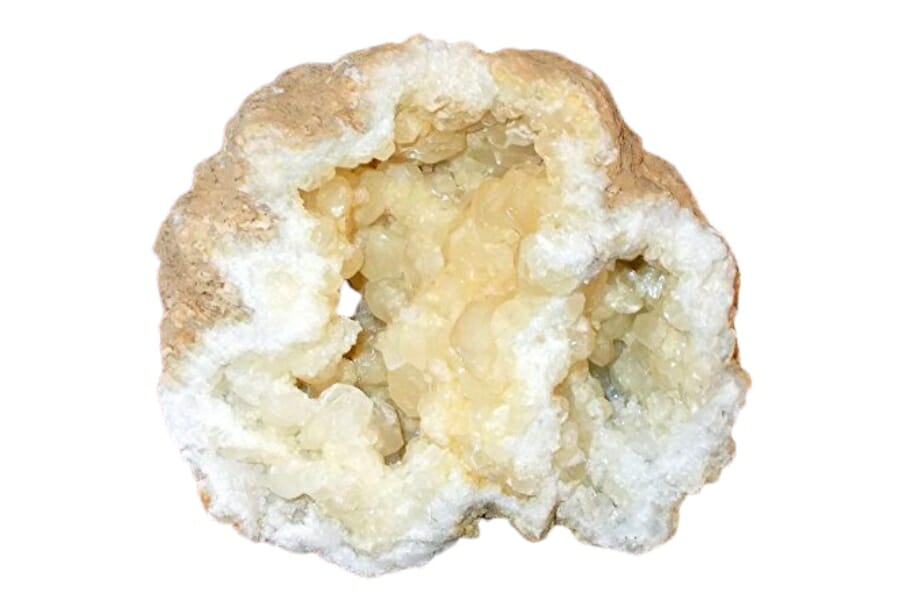
Filled with layers of Calcite crystals, Calcite Geodes are often found in sedimentary rock formations. They can come in a variety of colors, including clear, white, yellow, orange, and green.
The crystals inside a Calcite Geode can range in size from small and delicate to large and imposing, with intricate and unique patterns that are fascinating to observe. They’re often used for decorative purposes, as the light reflects off the crystals, creating a stunning and mesmerizing display of colors.
How much is Calcite Geode worth
A Calcite Geode’s price is nearest to its Quartz counterpart. It’s currently sells at $0.08 to $1.2 per carat.
Why Geode Is So Expensive
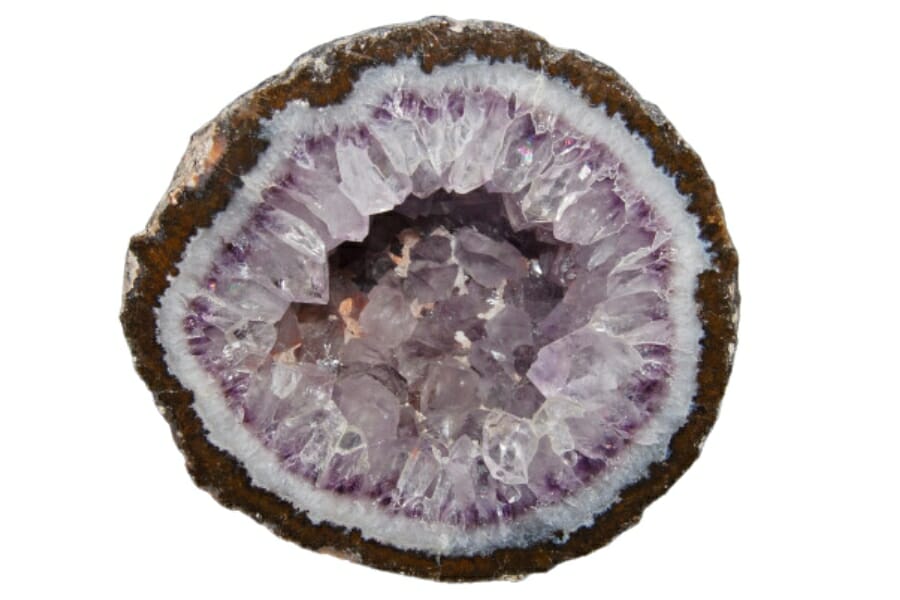
Geodes are highly valued by collectors, enthusiasts, and anyone who appreciates the natural beauty and wonder of the world around us. These unique and mesmerizing formations are created by millions of years of natural processes, and they contain a wealth of information about the geological history of our planet.
One of the reasons why Geodes are so highly valued is their sheer beauty. When you crack one open, you’re greeted by a dazzling display of intricate and delicate crystal formations, each one unique and mesmerizing in its own way.
From the deep blues and purples of amethyst geodes to the sparkling whites and greens of quartz geodes, there’s something truly magical about these natural wonders.
Another reason for Geode’s value is their rarity. While it can be found in many parts of the world, they are relatively rare and can only be formed under specific geological conditions. As a result, finding a high-quality specimen can be a challenging and time-consuming process, and collectors are willing to pay a premium for these rare and precious specimens.
In addition to their beauty and rarity, Geodes are also highly valued for their scientific and educational significance. They can provide valuable insights into the geological history of the earth, including the types of minerals and rocks that were present during different geological periods.
By studying Geodes, scientists can gain a deeper understanding of the processes that shape our planet and the natural forces that have shaped our world over millions of years.
How To Determine The Value Of Geode
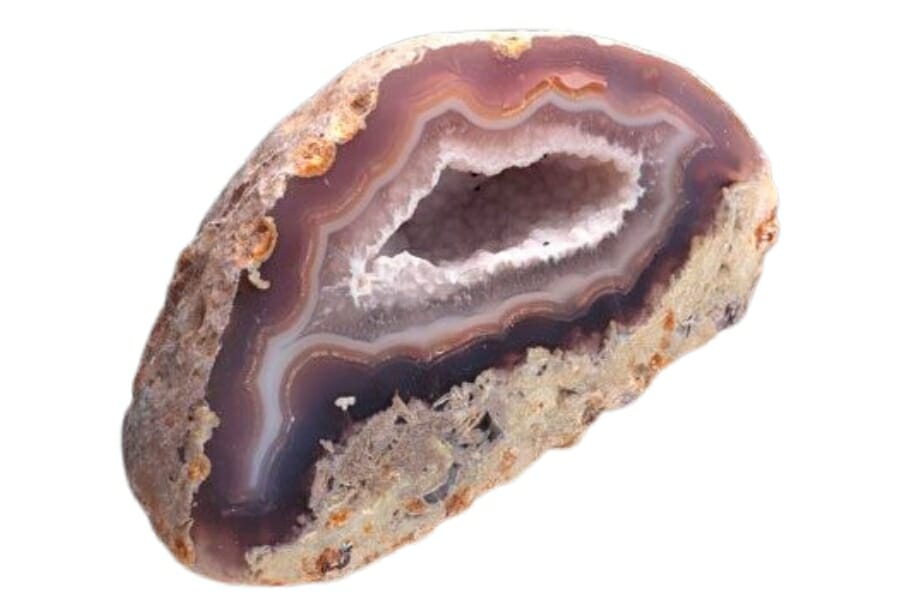
Like we’ve been saying at the start of this article, every Geode is unique and there are no two specimens that are exactly alike. This is why Geode’s value and price can vary so much, especially depending on the following factors:
Crystal Quality, Color, and Arrangement
Crystal quality is the most important factor in determining a Geode’s value. Specimens that contain high-quality crystals (well-formed, have sharp edges and terminations, and are free from damage or blemished) are generally more valuable. Clear and transparent crystals are also more desirable (and pricier) than those that are cloudy or opaque.
The color of the crystals also influence a Geode’s price. For example, Amethyst Geodes with deep purple crystals are generally more valuable than those with lighter or less saturated purple crystals.
In addition to these, the overall visual appeal of the crystals matter. Geodes with crystals that are arranged in aesthetically pleasing patterns or formations may be more valuable than those with randomly arranged crystals.
Size and Weight
Larger Geodes are more valuable than smaller ones, because they are assumed to contain more crystal formations and are therefore more visually impressive. But there are some exceptions to this rule. A small Geode that contains very high-quality crystals may be more valuable than a larger Geode with lower quality crystals.
As for weight, larger Geodes are typically heavier than smaller ones, and they require more effort and resources to transport and display. As a result, larger and heavier Geodes may be more expensive to purchase.
Condition
Geodes that are in good condition (no cracks or flaws) and have not been damaged or altered in any way are generally more valuable than those that have been broken or have suffered damage during the collection or preparation process.
Rarity
Some types of Geodes are relatively common and can be found in many locations around the world, while others are much rarer and can only be found in specific locations.
The rarer the Geode, the higher the price is likely to be.
Source and Method of Collection
Geodes that have been collected from difficult or dangerous locations may be more expensive than those that were collected from easier-to-access locations. Also, specimens that have been collected using more traditional or environmentally-friendly methods may be more valuable than those that were collected using more destructive methods.
Geode Price By Crystal
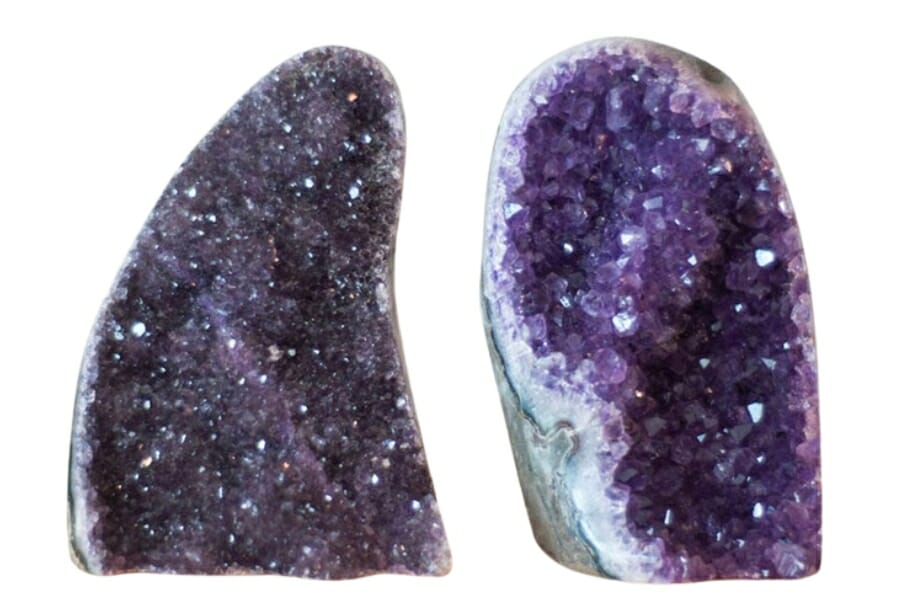
As mentioned above, the quality, arrangement, and color of the crystals that a geode contains is the most important factor in determining its price. Below is a concise table showing you how much Geode’s value is depending on its crystal contents.
Geode values by crystal
| Crystal Content | Price (Per Carat) |
| Agate | $0.2 – $0.4 |
| Amethyst | $0.011 – $0.02 |
| Calcite | $0.08 – $1.2 |
| Celestite | $0.003 – $0.005 |
| Quartz (Druzy) | $0.7 – $1.5 |
As you can see, the price of a Geode is deeply influenced by the kind of crystals it contains. To have a little more fun and to satisfy your curiosity, let’s look at how much Geode is worth depending on different units of measurement.
Geode pricing by unit of measurement
| Measurement | Price |
| A carat of Geode | $0.003 – $1.5 |
| A gram of Geode | $0.02 – $7.5 |
| An ounce of Geode | $0.43 – $213 |
| A kilogram of Geode | $15 – $7,500 |
| A pound of Geode | $7 – $3,402 |
| A ton of Geode | $13,608 – $6,803,888 |
The Most Expensive Geode
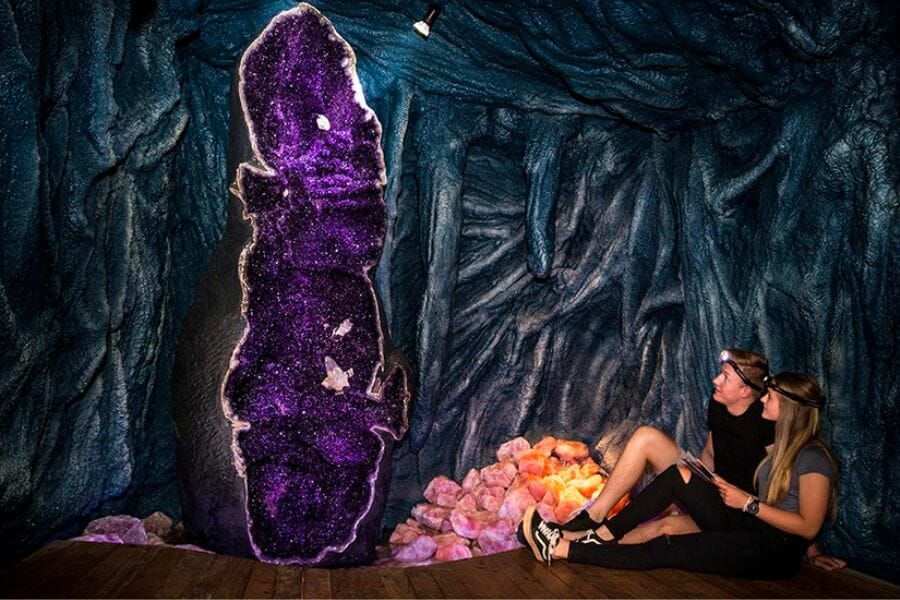
It’s difficult to determine the most expensive Geode ever sold, as prices can vary greatly depending on many factors. However, one particularly notable Geode that sold for a high price was the Empress of Uruguay, a large Amethyst Geode that was sold at auction in 2017.
The Empress of Uruguay weighed approximately 2.5 tons and stood over 10 feet tall. It was discovered in Uruguay in the 1980s and was notable for its deep, rich purple color and high-quality crystal formations.
At auction, the Empress of Uruguay sold for a staggering $1.1 million. The buyer was reportedly a private collector from Japan, who was drawn to the Geode for its impressive size and color, as well as its rarity as a high-quality Amethyst Geode.
The sale of the Empress of Uruguay set a new world record for the highest price ever paid for an Amethyst Geode, and it remains one of the most valuable Geodes ever sold. Its impressive size, deep purple color, and high-quality crystal formations made it a truly unique and valuable specimen, coveted by collectors and enthusiasts around the world.
How To Get An Appraisal On Your Geode
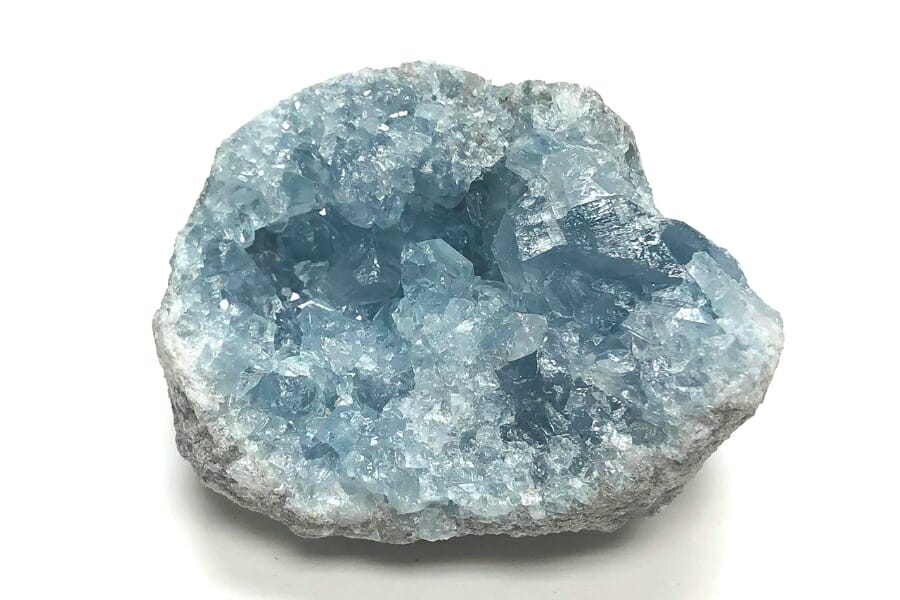
Before getting an appraisal on your Geode, here are a few things you can do to make the process as smooth and informative as possible:
Firstly, do your research. Look up similar Geodes online or in auction catalogs to get a sense of their value and market demand. This will give you a general idea of what to expect from your appraisal, and can also help you to identify any unique or unusual features that could affect its value.
Next, find a reputable appraiser who specializes in Geodes or minerals. Look for someone with experience and credentials in the field, and ask for references or recommendations from other collectors or dealers. A good appraiser will be able to provide you with a detailed assessment of your Geode, including its size, weight, crystal quality, and overall condition, as well as an estimate of its current market value.
Be sure to bring your Geode to the appraiser in person, if possible. This will allow them to examine it closely and provide a more accurate appraisal. Additionally, be prepared to provide any documentation or provenance that you have for the Geode, such as receipts, certificates of authenticity, or information about where and when it was acquired.
Finally, keep in mind that the value of a Geode can fluctuate over time, and can vary depending on many factors. An appraisal is a snapshot in time, and may not reflect the true long-term value of your Geode. However, a professional appraisal can still be a valuable tool if you want to buy, sell, or insure your Geodes.

